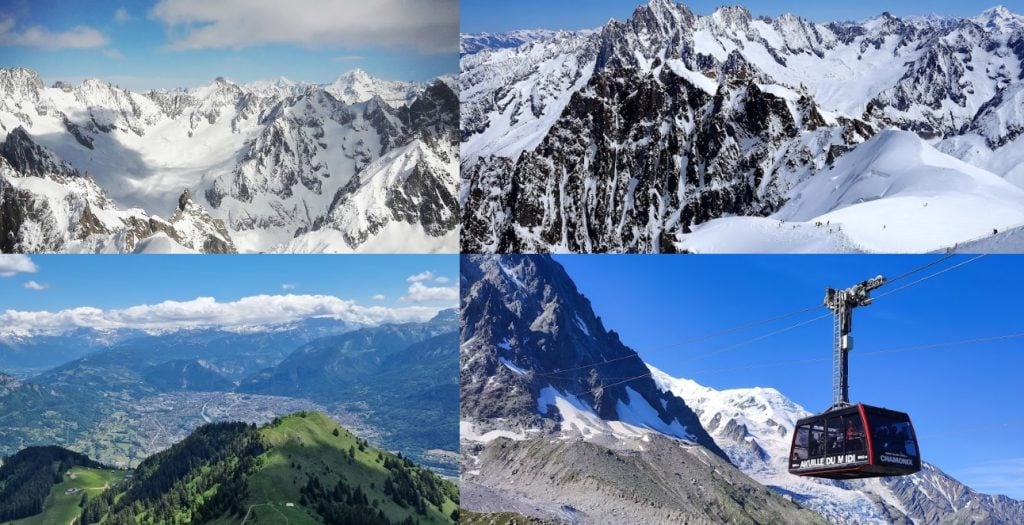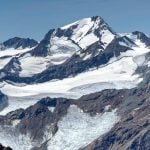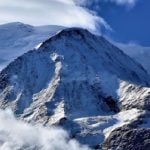Mont Blanc Mountain: The Highest Peak in Europe
Mont Blanc Mountain, also known as “The White Mountain,” is the highest peak in the Alps mountain range and Western Europe. It is located on the border between France and Italy, with its summit standing at an impressive altitude of 4,809 meters (15,777 feet) above sea level. The mountain is renowned for its majestic beauty, rugged terrain, and challenging conditions, making it a popular destination for mountaineers, trekkers, and outdoor enthusiasts.French Mont Blanc (also spelled Mont-blanc) or Italian Monte Bianco (both meaning White Mountain)
Geography and Location:
Mont Blanc is situated in the Graian Alps and the Mont Blanc Massif, a massif being a compact group of mountains. It straddles the Haute-Savoie region of France and the Aosta Valley region of Italy. The mountain’s summit marks the boundary between the two countries. The closest town to Mont Blanc is Chamonix, a popular resort town known for its mountaineering and outdoor activities.
Mountaineering:
Mont Blanc attracts climbers from all over the world, making it one of the most sought-after peaks for mountaineering. However, scaling Mont Blanc requires a high level of physical fitness, mountaineering skills, and acclimatization to the high altitude. The two most common climbing routes are the “Goûter Route” from the French side and the “Normal Route” from the Italian side.
Trekking and Hiking:
For less experienced adventurers, trekking and hiking provide an opportunity to explore the surrounding areas and enjoy stunning views of the mountain. Several well-marked trails and paths cater to different difficulty levels, offering a range of hiking experiences for all enthusiasts.
Climate and Weather:
Mont Blanc experiences a challenging and ever-changing climate. Weather conditions can be harsh and unpredictable, even in the summer months. It is essential to check weather forecasts and be prepared for sudden changes in temperature, wind, and visibility when planning any activity on the mountain.
Wildlife and Nature:
The Mont Blanc region boasts a diverse array of wildlife and plant species, including ibex, chamois, marmots, and various alpine flora. Nature enthusiasts and photographers will find plenty of opportunities to spot and capture these creatures in their natural habitat.
Winter Sports:
During the winter season, the Mont Blanc area becomes a haven for winter sports enthusiasts. Skiing, snowboarding, and other snow-related activities are available at various ski resorts in the vicinity.
Cultural Significance:
Mont Blanc holds cultural significance, inspiring art, literature, and mountaineering history. It has been a source of fascination for explorers and artists for centuries, and its allure continues to draw people to its majestic slopes.
Conservation and Safety:
Preserving the fragile ecosystem and ensuring safety are of utmost importance in the Mont Blanc region. Local authorities, mountain guides, and environmental organizations work together to protect the area and promote responsible tourism.
Mont Blanc/Monte Bianco Mountain
Chamonix, located in the shadow of the majestic snowy peak of Mont Blanc and the first starting point to reach Mont Blanc; It is a ski resort in the province of Haute-Savoie in the Rhône-Alps region, surrounded by historic churches and stunning mountains. Chamonix has been a world-renowned ski resort since the first Winter Olympics held here in 1924. It is located at the intersection of the borders of France, Italy and Switzerland. With six different ski areas, there are slopes that appeal to all levels, from beginners to professional skiers. Chairlifts and pistes are woven over the slopes like a net. 73 facilities, 150 runways are mentioned. At certain times, you can ski at once in three countries (Italy, France, Switzerland) that share a common border with Switzerland and Mont Blanc.
Chamonix is a region with intense summer and winter tourism activities. It is stated that approximately 5 million tourists visit the region annually.
Doctor Michael Packard and the hunter and guide Jacques Balmat sitting in Chamonix managed to climb the highest peak of Europe, Mont Blanc (4,807m.) in 1786.
Where is Mont Blanc located?
Mont Blanc is located on the border between France and Italy. It is in the western part of the Alps, near the French town of Chamonix. One side of the mountain faces France, while the other side faces Italy.
How high is Mont Blanc?
The official height of Mont Blanc is 4,807 meters. However, it can change by a few centimeters each year due to changes in the snowpack. In 2002, it was measured to be 4,808 meters.
Who was the first to climb Mont Blanc?
Mont Blanc was first climbed on August 8, 1786 by two mountaineers named Jacques Balmat and Michel-Gabriel Paccard.
Is it difficult to climb Mont Blanc?
Climbing Mont Blanc is considered a difficult climb, as it requires experience and proper equipment. There are different climbing routes, and some routes are more difficult than others.
What do you need to climb Mont Blanc?
To climb Mont Blanc, you need mountaineering experience, proper equipment (climbing boots, crampons, ice axe, rope, helmet, etc.), and suitable weather conditions. It is also important to obtain the necessary permits before starting the climb.
What activities can be done on Mont Blanc?
In addition to climbing, many other activities can be done on Mont Blanc, such as hiking, skiing, snowboarding, rock climbing, and paragliding.
How to get to Mont Blanc?
The nearest airports to Mont Blanc are Geneva and Lyon. You can take a bus or train from the airports to Chamonix. From Chamonix, you can start your climb to Mont Blanc.
Other information about Mont Blanc:
- Mont Blanc is the highest mountain in Europe.
- Mont Blanc is the highest peak in a mountain range located in the Alps.
- Mont Blanc means “White Mountain”.
- Mont Blanc is a UNESCO World Heritage Site.
Blanc’s Photos and Map on Google





